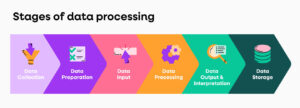Resources & Suggestions
Mains Answer Writing Latest Articles
Daily Answer Writing Practice Questions (24 February 2025)
The rise of the work-from-home culture has brought about several ethical issues in private organizations. In this context, do you believe it is ethical for an employee to engage in moonlighting? Discuss. (Answer in 150 words) घर से काम करने ...
Indo-US Relation: Areas of Cooperation & Conflicts
Key Areas: Defense, technology, trade, energy, and regional cooperation. Key Areas of Cooperation 1. Defense and Security Transition from buyer-seller to co-production and technology sharing. India as a Major Defense Partner (MDP) and inclusion in STA-1. Access to advanced technologies, ...
भारत-अमेरिका संबंध: सहयोग और संघर्ष के क्षेत्र
मुख्य विषय: भारत-अमेरिका संबंधों की मजबूती, विशेषकर रक्षा, प्रौद्योगिकी और क्षेत्रीय सहयोग में प्रगति। सहयोग के प्रमुख क्षेत्र 1. रक्षा एवं सुरक्षा सहयोग भारत और अमेरिका के बीच रक्षा संबंधों का विस्तार। प्रमुख रक्षा साझेदार (MDP) का दर्जा और STA-1 ...

Data preprocessing is an important first step in turning random data into actionable information. Eliminate problems such as noise, redundancy, and incompleteness to prepare data for analysis, machine learning prototyping, and other data processing activities
The main objectives of data preprocessing are:
1. Cleaning: Errors, inconsistencies and inaccuracies are removed from the data to ensure quality.
2. Conversion: This stage converts the data into a format that is appropriate for the planned research in terms of size, structure and methodology.
3.Integration: Combining data from multiple sources produces homogeneous and complete data.
The purpose of data preprocessing is to improve data quality, increase data accuracy, and prepare data for subsequent analysis or processing. By ensuring that data is properly organized, accurate, and complete, data prioritization maximizes the success of data-driven businesses.
In summary, data preprocessing transforms raw data into a clean and organized data set, ready for further analysis, modeling, or other application tasks. Proper implementation is essential for data-driven businesses to produce reliable and meaningful results.
Data preprocessing is a crucial step in the data analysis and machine learning pipeline. It refers to the process of transforming and preparing raw data for further analysis or modeling. The main goals of data preprocessing are to improve the quality, consistency, and suitability of the data for the specific task or algorithm being used.
The key activities involved in data preprocessing include:
Data Preprocessing is a crucial step in the data analysis and machine learning pipeline, involving the transformation of raw data into a clean and usable format. This process addresses issues such as missing values, noise, and inconsistencies in the data, ensuring that the dataset is suitable for further analysis or model training. Effective data preprocessing improves the accuracy and efficiency of analytical models by providing a solid foundation of high-quality data.
Key steps in data preprocessing include:
In conclusion, data preprocessing is an essential step that ensures the quality and reliability of the data used for analysis and modeling. By addressing data quality issues and transforming the data into a suitable format, preprocessing enables more accurate and efficient analysis. For example, in a customer segmentation project, preprocessing might involve cleaning customer transaction data, normalizing purchase amounts, and encoding categorical features like customer demographics. This processed data would then lead to more precise and actionable insights.